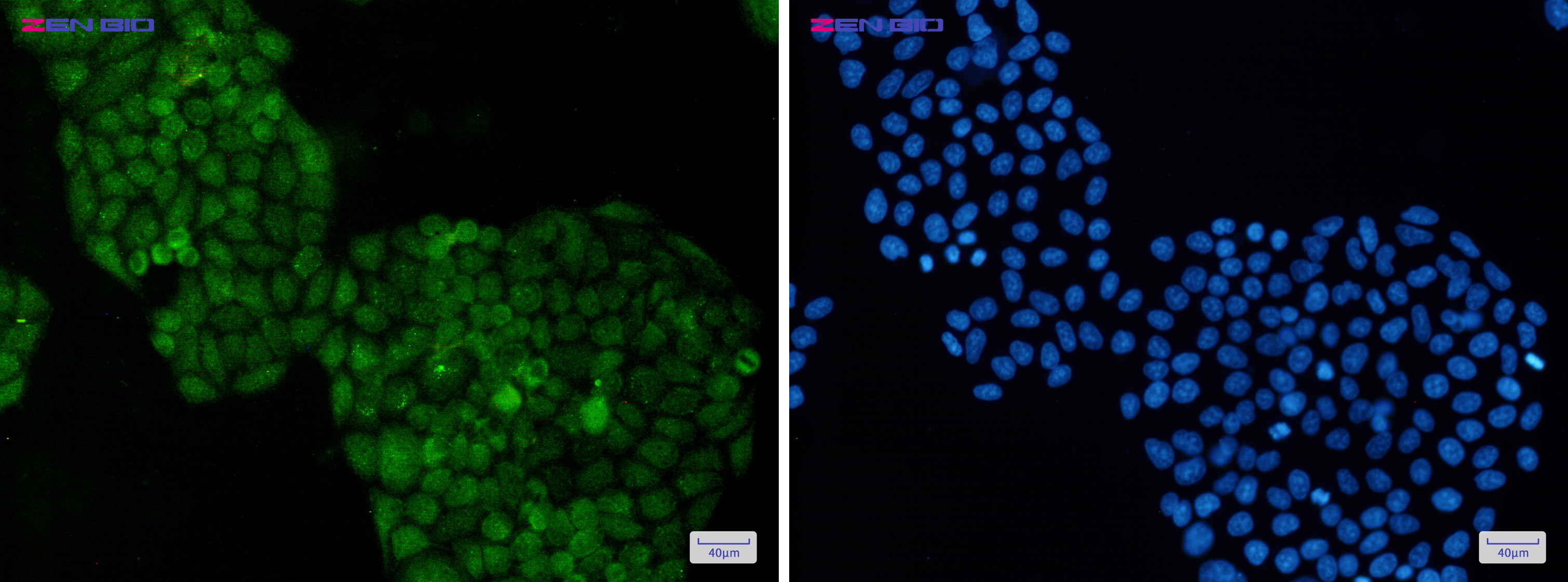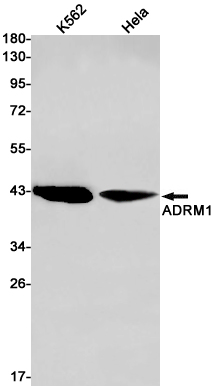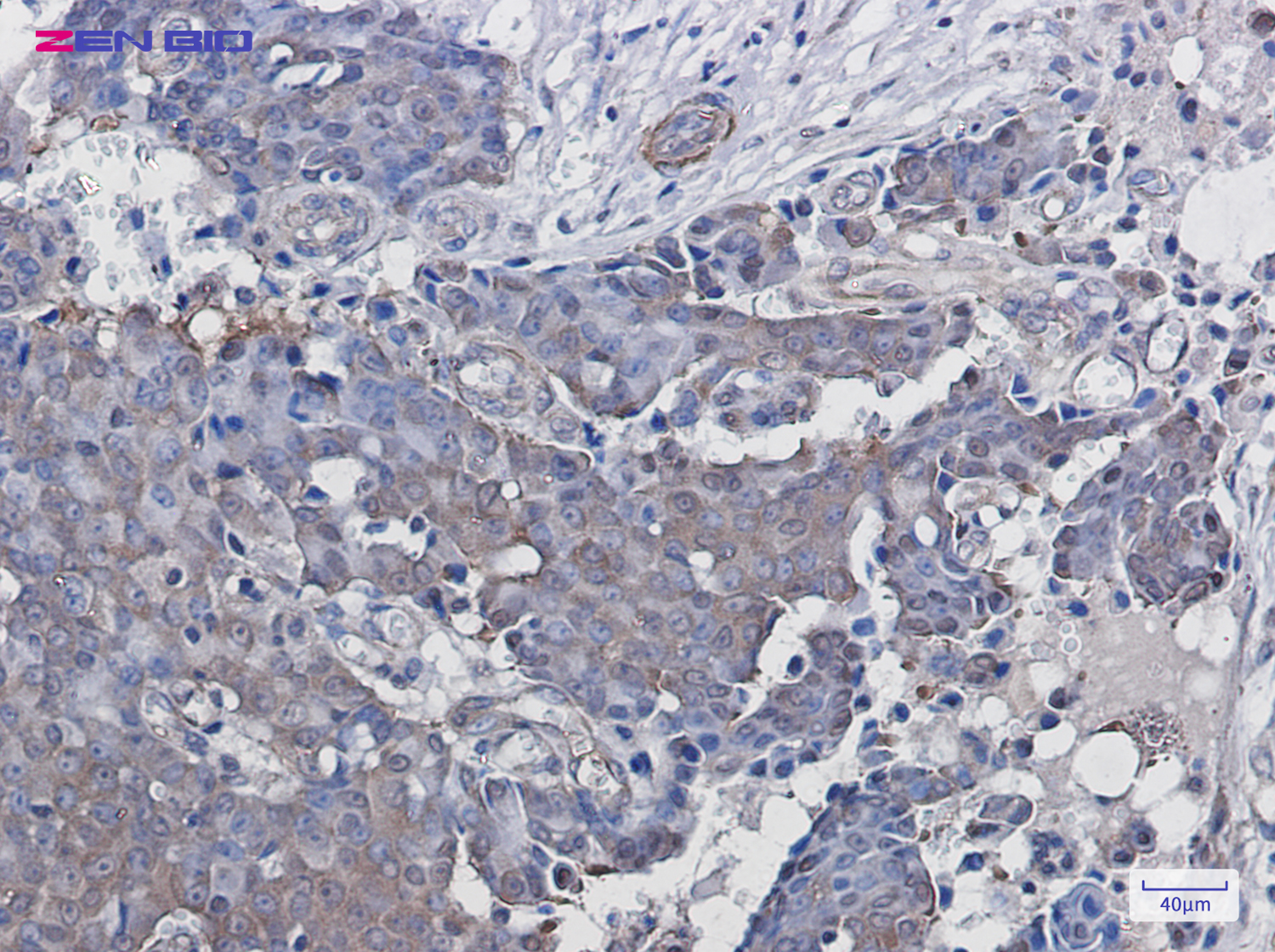-
Product Name
Anti-ADRM1/ARM-1 Rabbit antibody
- Documents
-
Description
ADRM1/ARM-1 Rabbit polyclonal antibody
-
Tested applications
WB, IHC-P, ICC/IF, FC, IP
-
Species reactivity
Human
-
Alternative names
ARM1; ARM-1; GP110 antibody
-
Isotype
Rabbit IgG
-
Preparation
Antigen: A synthetic peptide of human ADRM1
-
Clonality
Polyclonal
-
Formulation
Supplied in 50nM Tris-Glycine(pH 7.4), 0.15M Nacl, 40%Glycerol, 0.01% sodium azide and 0.05% BSA.
-
Storage instructions
Store at -20°C. Stable for 12 months from date of receipt.
-
Applications
WB: 1/2000-1/10000
IHC: 1/20
ICC/IF: 1/20
FC: 1/20-1/100
IP: 1/20
-
Validations

Immunocytochemistry of ADRM1(green) in Hela cells using ADRM1 Rabbit pAb at dilution 1/50, and DAPI(blue)

Western blot detection of ADRM1 in K562,Hela cell lysates using ADRM1 Rabbit pAb(1:1000 diluted).Predicted band size:42kDa.Observed band size:42kDa.

Immunohistochemistry of ADRM1 in paraffin-embedded Human breast cancer tissue using ADRM1 Rabbit pAb at dilution 1/100
-
Background
Swiss-Prot Acc.Q16186.Component of the 26S proteasome, a multiprotein complex involved in the ATP-dependent degradation of ubiquitinated proteins. This complex plays a key role in the maintenance of protein homeostasis by removing misfolded or damaged proteins, which could impair cellular functions, and by removing proteins whose functions are no longer required. Therefore, the proteasome participates in numerous cellular processes, including cell cycle progression, apoptosis, or DNA damage repair. Within the complex, functions as a proteasomal ubiquitin receptor. Engages and activates 19S-associated deubiquitinases UCHL5 and PSMD14 during protein degradation. UCHL5 reversibly associate with the 19S regulatory particle whereas PSMD14 is an intrinsic subunit of the proteasome lid subcomplex.
Related Products / Services
Please note: All products are "FOR RESEARCH USE ONLY AND ARE NOT INTENDED FOR DIAGNOSTIC OR THERAPEUTIC USE"
